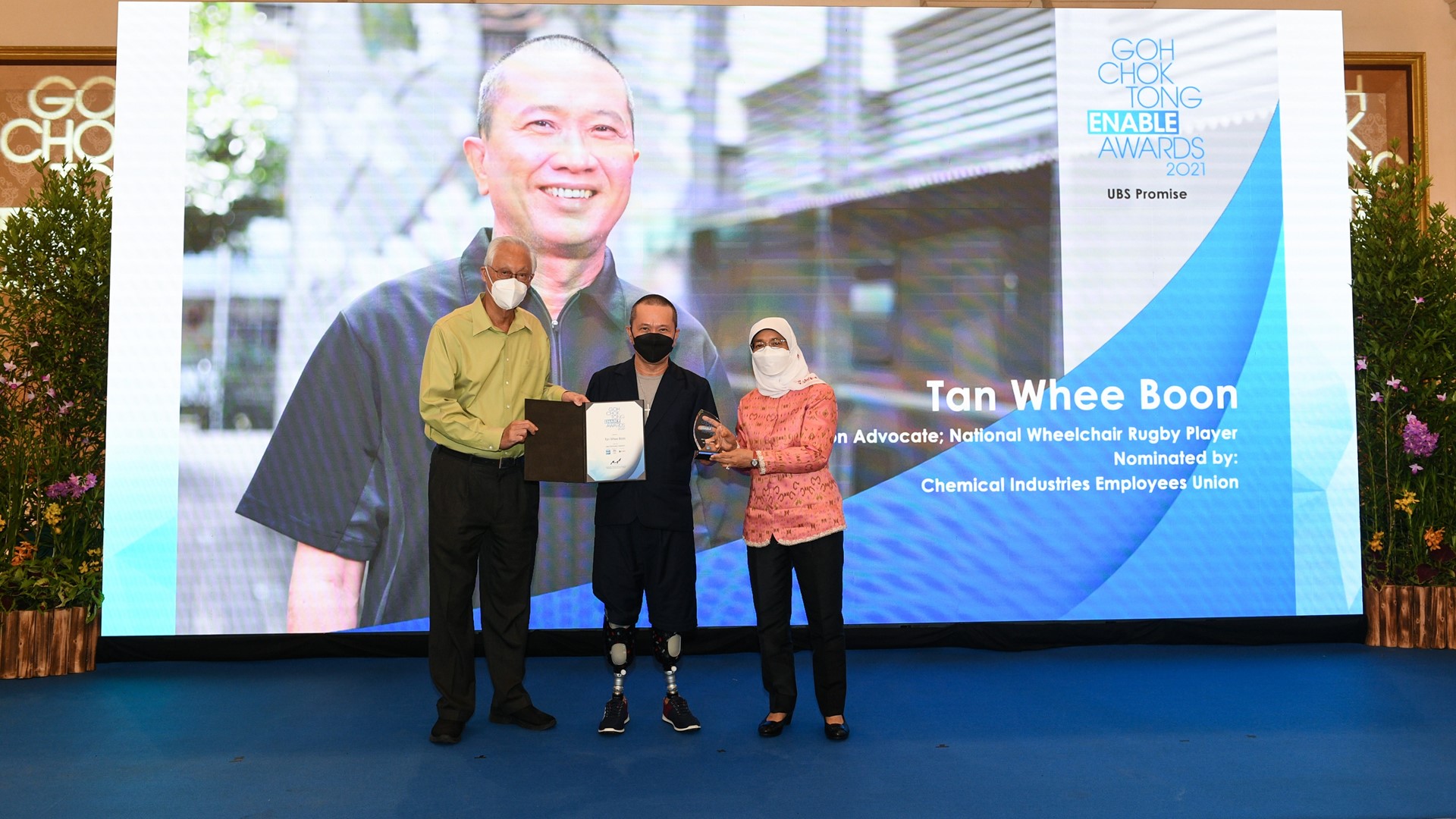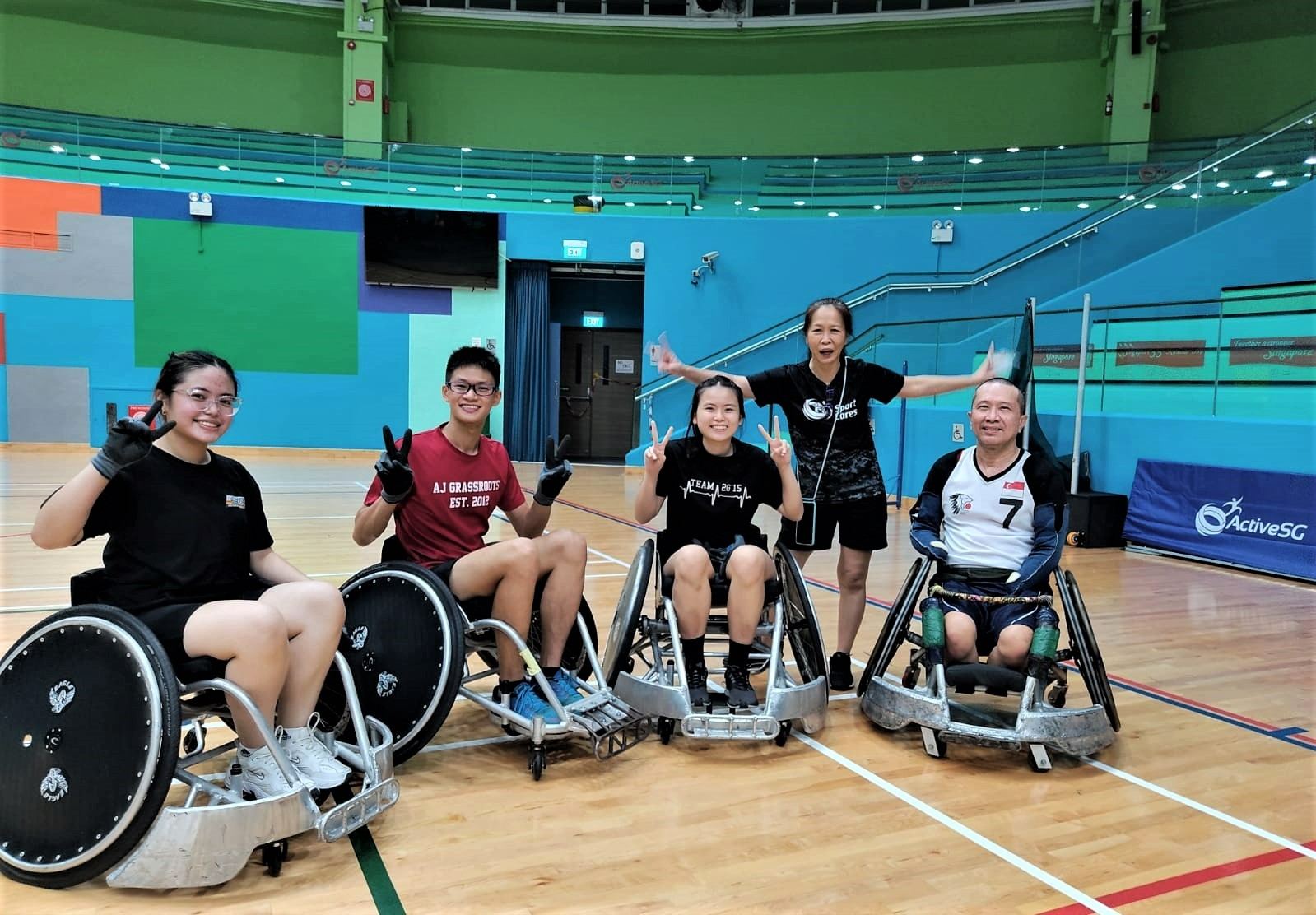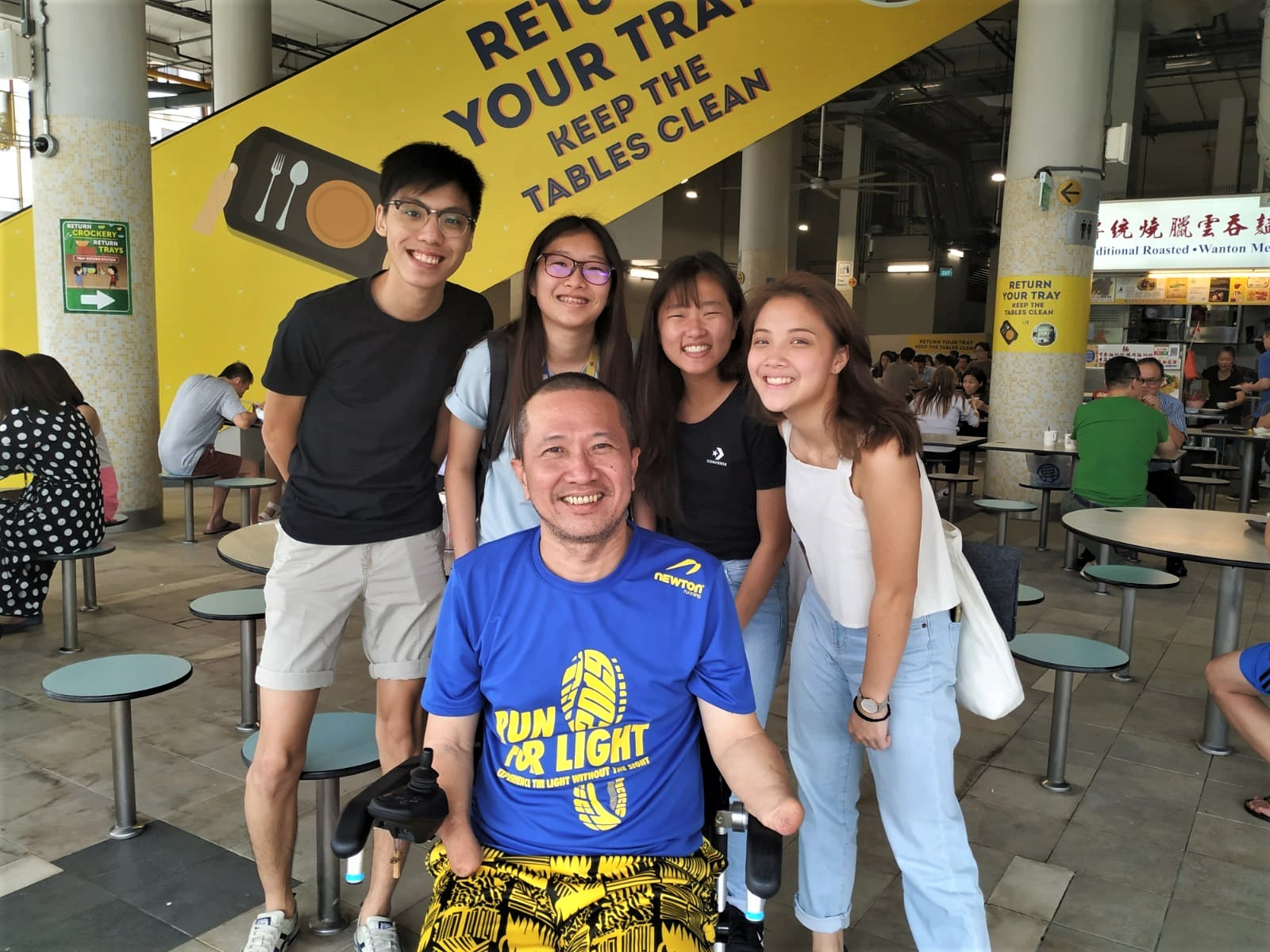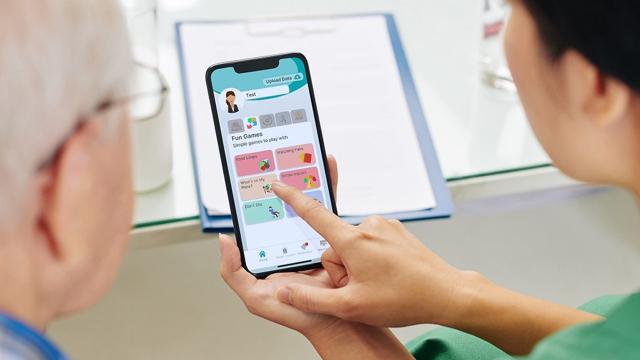Theodore Roosevelt’s quote ‘Believe you can and you’re halfway there.’ comes to mind as SIT Community Teacher, Mr Tan Whee Boon displays immense grit and determination to lead the life that he desires, inspiring others in the process.

Mr Tan Whee Boon receiving the Goh Chok Tong Enable Award from President Halimah Yacob and Emeritus Senior Minister Goh Chok Tong.
Out on the court of the Toa Payoh Sports Hall, Mr Tan Whee Boon has just suffered a huge collision that nearly sends him flat on the floor. But it is all part of the game. The quadruple amputee is playing wheelchair rugby – a sport where players strap themselves into armoured wheelchairs and crash into each other like bumper cars. Their goal: to carry the ball into the opponent’s end zone for a try.
It may get rough and scrappy, and the skin on his arms has turned reddish raw from furiously spinning the hand rims of his wheelchair. But it is always a smashing good time. “When I’m out there, I totally change,” said the national player who had all four of his limbs amputated following a bacterial infection in 2015. “I can be someone else, instead of just being a person with complete disability.”
More just an adrenaline rush, the sport is also his signature class. As a Community Teacher at the Singapore Institute of Technology (SIT) since 2017, the 56-year-old uses it to give the university’s first-year Occupational Therapy undergraduates a glimpse of what life is like for people with disabilities.
“They get a better understanding of my daily living situation,” he said. “I’d also give them situational problems. If they were in my position, what would they do?”
Getting to play wheelchair rugby has become a hot favourite among his students, with some even returning regularly to train. “They’ve really enjoyed it. When I’m at tournaments, they also come and support me,” he said, a glimmer of pride evident in his eyes. Many have also formed lasting friendships with him.

SITizens trying out a game of wheelchair rugby with Mr Tan (far right) guiding them on the court. Mr Tan is accompanied by his wife (standing).
Now, there is another reason to be proud. This avid sportsman and passionate educator was one of 13 recipients to be conferred the Goh Chok Tong Enable Award, which recognises the achievements of people with disabilities.
But the soft-spoken Mr Tan remains humble. “This award is not for me – it’s for my wife and friends who have been my supporters. I’m only going there to collect it,” he said with a smile.
The Unorthodox Educator
In line with its applied learning pedagogy, SIT engages people with disabilities or other medical conditions – such as stroke or Parkinson’s disease – as Community Teachers to share their life experiences.
Launched in 2016, The Community Teacher Programme has been effective in cultivating empathy and improving attitudes of Occupational Therapy students towards persons with disabilities (PWD).
“Occupational Therapy students meet persons with disabilities, interact with them with a set of learning objectives and are ‘taught’ about their life narrative. This is to ensure students do not view PWD as handicapped and that they too, have aspirations, difficulties and unique skills like everyone else,” said A/Prof May Lim, who leads the Community Teacher Programme.
Each teacher gets assigned three to four students, with the close-quarter interactions providing an invaluable, practical aspect to their learning experience.
Playing sports aside, Mr Tan’s students also visit his home to see how it has been designed for his convenience and observe his daily routine. For example, he shows them how he uses the computer, which is set up on a low table. They also meet up over meals, where he typically hosts a dialogue.
“Mr Tan is a jovial man who never sees his trials as a tribulation but a learning process. Despite the many obstacles Mr Tan faces daily, he never gives up. He has inspired us to persevere through tough times and to give back to others around us,” said Year 3 Occupational Therapy student Kimberly Cheong, who fondly recalls what Mr Tan taught her.

Mr Tan with Year 3 Occupational Therapy student Kimberly Cheong (extreme right) and her peers at a hawker centre.
Although the lesson plans are rather fixed, the content is not. The biggest lesson that he wants his students to take away is that not everything has to follow the text. “What the book shows is the perfect way. But in real life, it’s different,” he explained.
This is why he emphasises on honing their resourcefulness, showing them innovative solutions to address the unique challenges that each person with disabilities faces. “I make them think out of the box,” he said.
For example, he has a simple way of getting around the house without the need for clunky prosthetics. All he uses is a pair of modified slippers, with cloth cut out from a cap and glued onto the soles to prevent him from slipping out of them.
“It’s convenient, I can wear it myself, and it cost me less than $5. Prosthetics costs a few thousand dollars and I need someone to put it on for me,” he said. “This is a practical lesson.”
A Beacon of Hope
Beyond helping to equip students with the skills for a promising career, he also gives hope to fellow amputees through his volunteer work outside the classroom.
For instance, as a member of the Tan Tock Seng Hospital’s Amputee Support Group, he meets new amputees to provide solace. But there are usually little words of advice. Showing, not telling, is his approach. “I show them how I live. I’m still working, I play sports, and I volunteer,” he said.
“This lets them gain some confidence. They’ll think: ‘If someone like him can do it, surely I can do better than him.’”
While his mobility may be limited, his determination to live life to the fullest is not. “I don’t want to take life for granted,” he said. “I want it to be meaningful.” And that means continuing to help his communities. “It’s like what people say. If you want to go fast, you go alone,” he said. “But if you want to go far, you go together.”
![[FA] SIT One SITizen Alumni Initiative_Web banner_1244px x 688px.jpg](/sites/default/files/2024-12/%5BFA%5D%20%20SIT%20One%20SITizen%20Alumni%20Initiative_Web%20banner_1244px%20x%20688px.jpg)


